West End of New Town Edinburgh in the summer rain
Hello Hello Hivians
Storm Floris has been blowing over our doors this morning, and with it has brought rains and blue skies!
So what better than to show you parts of the West End of Edinburgh in the rain!
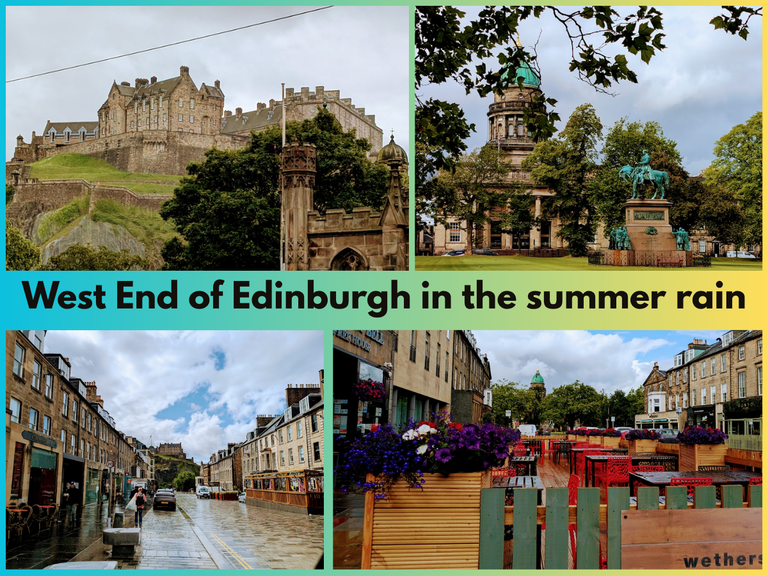

I grew up in Edinburgh or Edina as she is sometimes romantically called by Robert Burns and Robert Fergusson amongst others.
Where did Edinburgh get it's name?
Did you know that Edinburgh castle was really more of a troop garrison than an actual castle as such.
The origin of Edinburgh's name comes from Eidyn, a word from the Cumbric language (a Brythonic Celtic language once spoken in the area). The "din" in the original name, Din Eidyn, meant "fort," which was later replaced by the Old English word "burgh," also meaning fort.
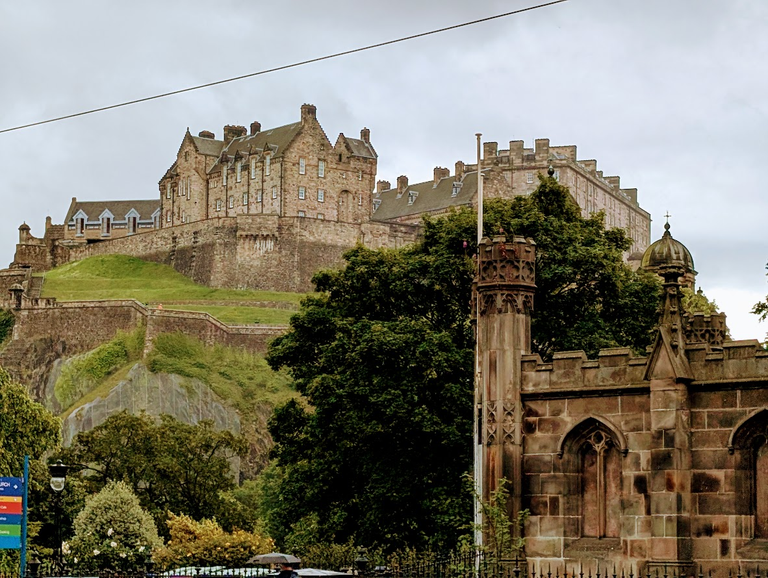
I often prefer seeing the castle when it is wet, it gives more of a moody look, what do you think?
Rose Street
One of the most famous streets in Edinburgh is Rose Street that runs parallel to Princes Street, and is sandwiched between the grand Princes and George Streets. It is narrow, pedestrian-friendly lane and not as wide as other streets and not a car thoroughfare.
Rose Street was originally designed in the 18th century as a service street for the more affluent residents of the New Town.
Back when I was a teenager it was almost wall to wall with pubs and used to be called "the Amber Mile." and was one heck of a pub crawl, now though they are far less common.
The Rose Street Brewery
They really should drop the name Brewery as they stopped brewing on the premises ceased in 1999.
It opened in 1983 and was the first microbrewery that I visited and drank a fair amount of pints there in my university days, purely for medicinal purposes of course!
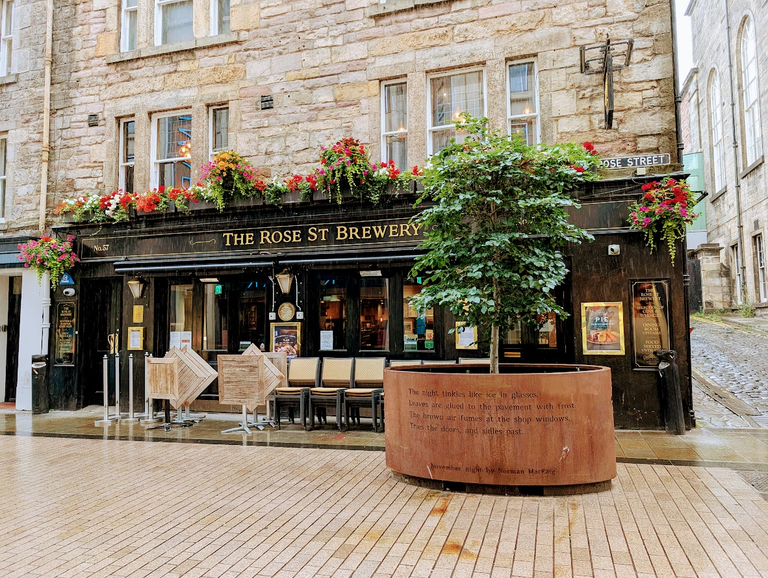
The beautification of Rose Street.
Over the years they try to beautify places. In this case, the original quirky and sometimes uneven cobbles have been replaced with less uneven newer blocks and big planters.
I call this planter ~ The Norman MacCaig planter
The lines on the planter are from the poem "November Night" which was written by Norman MacCaig, a renowned Scottish poet.
Norman Alexander MacCaig (14 November 1910 – 23 January 1996) was a Scottish poet and teacher.
He actually was quite an intriguing character, he was a pacifist and registered as a conscientious objector during the second World War. His pacifist views would see him jailed.
He also described himself as a Zen Calvinist. And if you know his poetry or had to study at school like I did then you can recognise some recognizable ingredients of Calvinism ... i.e a gloomy, estranged, self-reflexive consciousness haunted by guilt and masochism!
November Night by Norman MacCaig
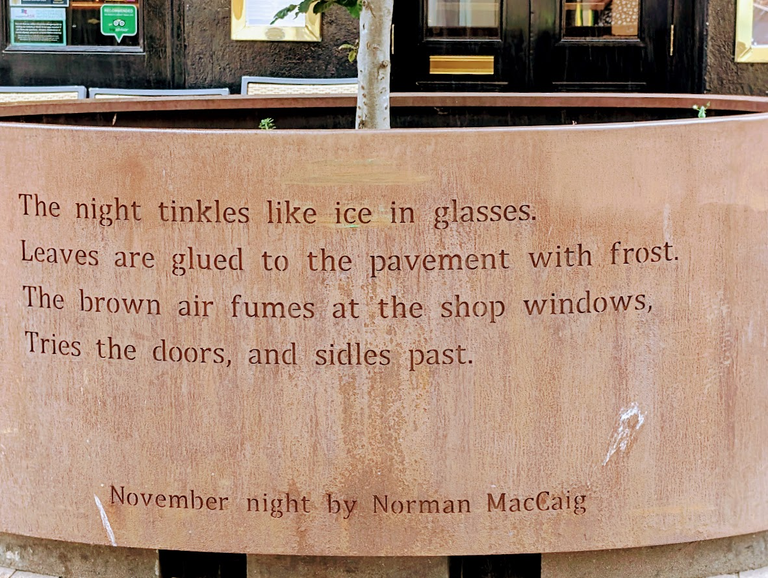
The lines etched onto the planter read:
"The night tinkles like ice in glasses.
Leaves are glued to the pavement with frost.
The brown air fumes at the shop windows,
Tries the doors, and sidles past."
Having grown up in Edinburgh I can totally relate these words to a cold Novemeber night in the city!
This excerpt vividly portrays the harsh, cold, and somewhat desolate atmosphere of a November night.
Thank you gemini for this little English literature lesson ....
The poem uses strong imagery and sensory details, like the "tinkling" sound of ice and the "glued" leaves, to evoke the biting chill and stillness of the night. The "brown air" suggests fog or pollution, contributing to the muted and somewhat oppressive urban landscape described.

We are still walking along Rose Street now and will stop at some interesting places along the way.
First up is this shop, which is not a pub, but as the sign says ...
It Started in the North - Edinburgh's Home of Subculture
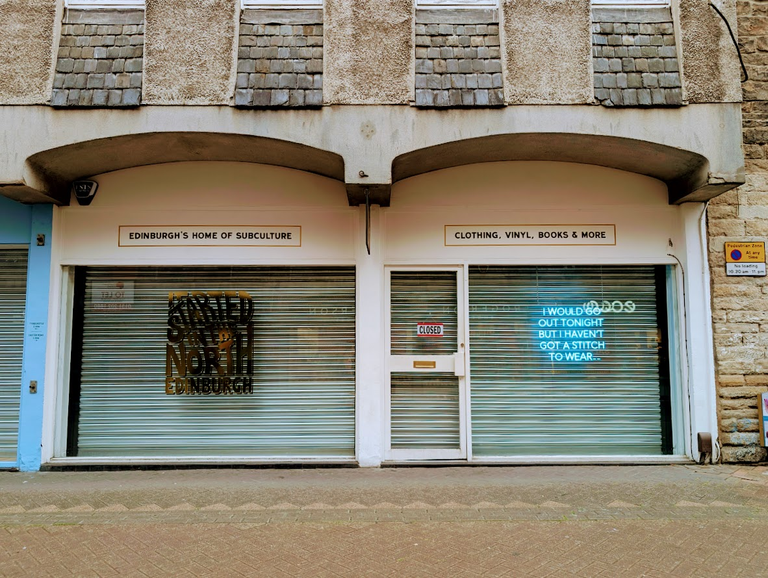
Can you recognise the lyrics in the sign in the right window?

I WOULD GO OUT TONIGHT BUT I HAVEN'T GOT A STITCH TO WEAR..
This phrase is a well-known lyric from the song "This Charming Man" by the British band The Smiths, released in 1983.
If you thought the November winter night weather in Scotland was depressing then god help you when you listen to The Smiths 🤣

Old buildings require facelifts and tidying up, when they do this they put up scaffolding and protective sheeting around them. I had a restaurant to visit later, so wanted to check it was still there etc!
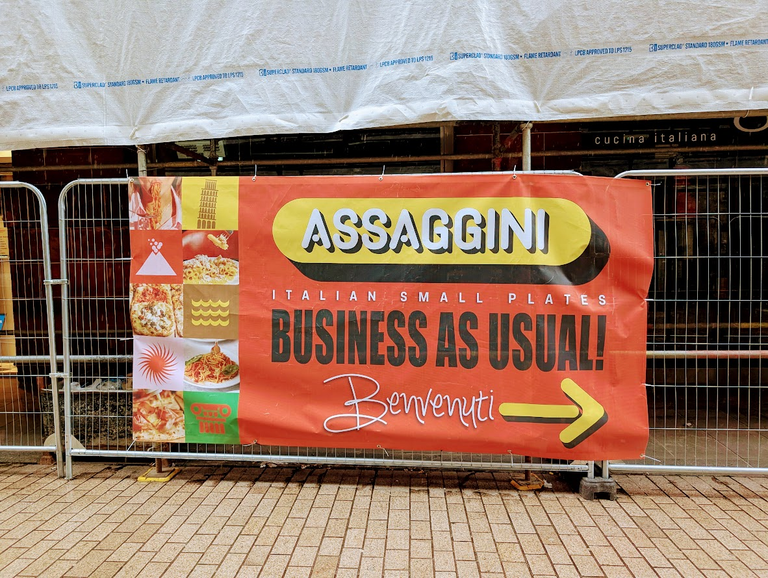
Business as usual at Assaggini's!
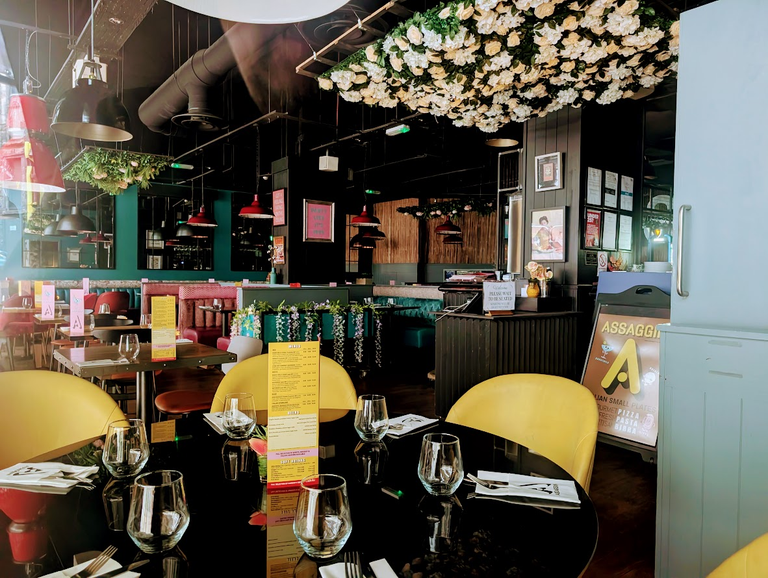
Her name was Rio!
Name that band... That line is from their hit in 1982.
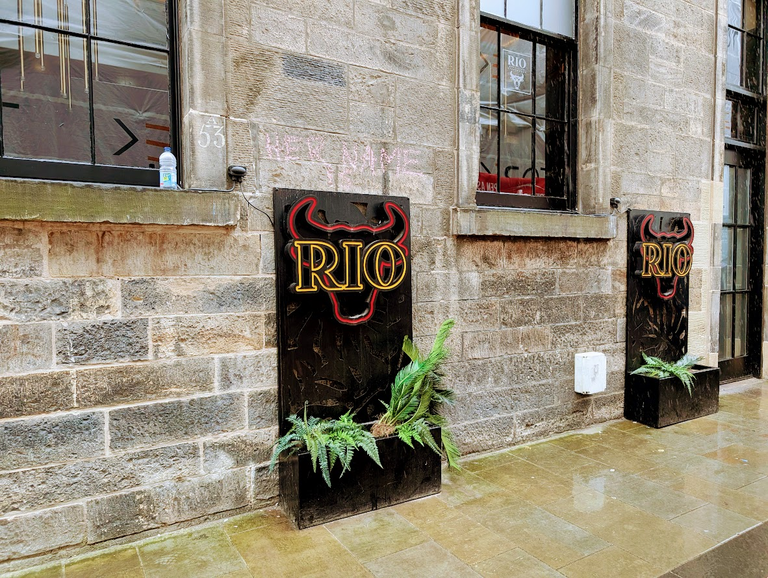
Dirty Dick's
Another pub that I have sunk more than a few pints in. They used to be lax with their age checking and I drank there in my mid teens.
Can you guess the origin of the name?
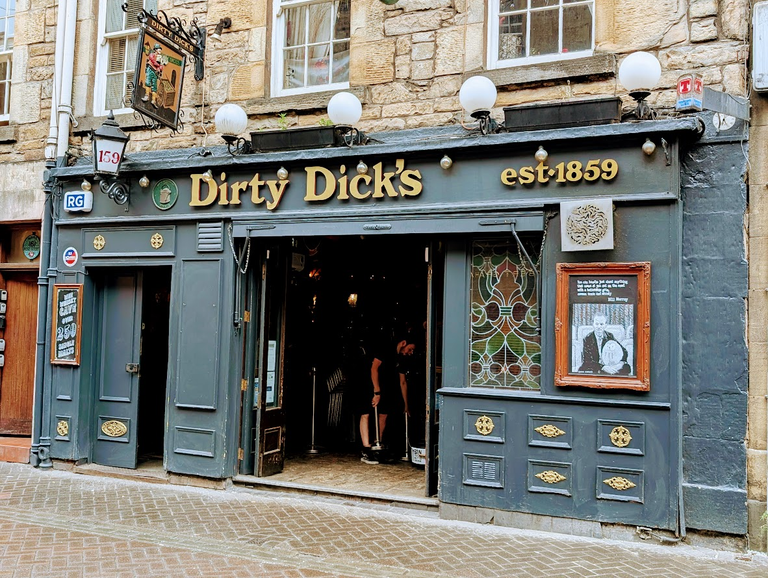
It's actually is a nod to a famous London pub of the same name and a historical figure, Richard Bentley.
Legend has it that Richard Bentley, a wealthy 18th-century merchant, became "Dirty Dick". After his fiancée's death he refused to clean himself or his property. The property became a tourist attraction due to its state of disrepair.
This story is often said to be an inspiration for the character of Miss Havisham in Charles Dickens' "Great Expectations."
Another literary lesson today!

Moving up now from Rose Street to the grand George St.
Fake flowers? They don't look so grand!
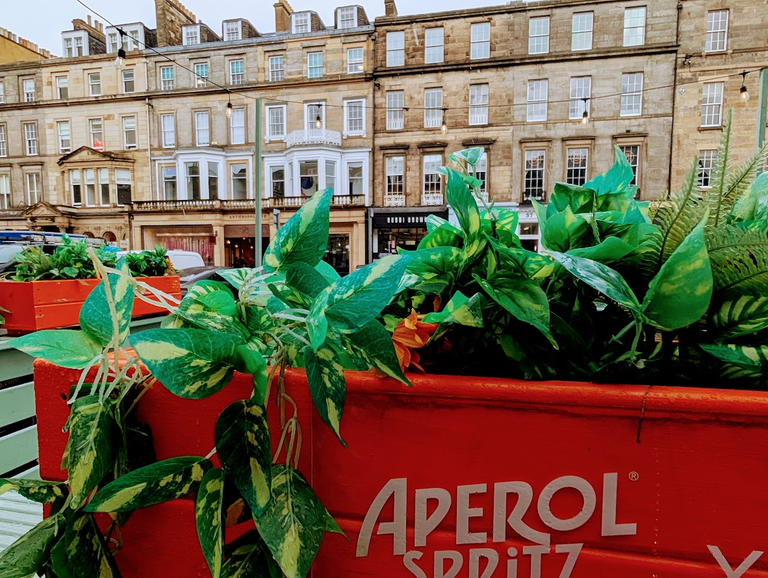
There are various streets that we cross, which all have wonderful views of the castle.
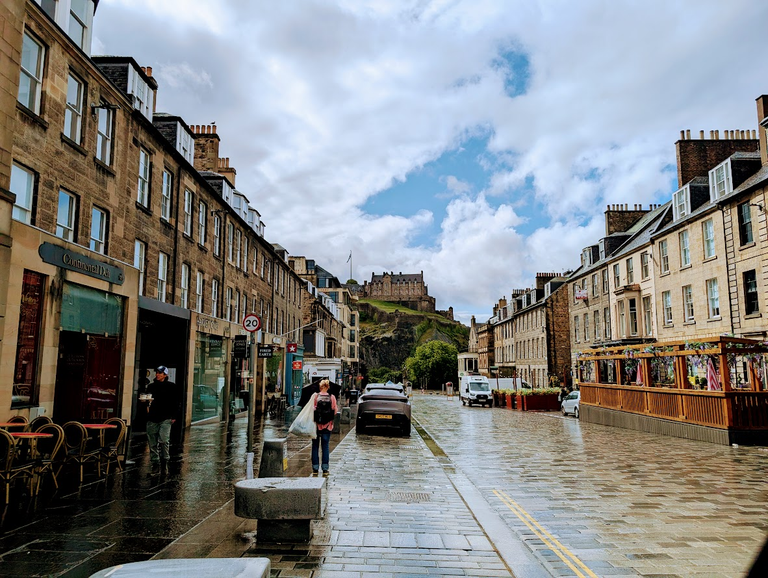
The Alexander Graham Bell
Does that name ring a bell?
It should ...
He was the inventor of the telephone!
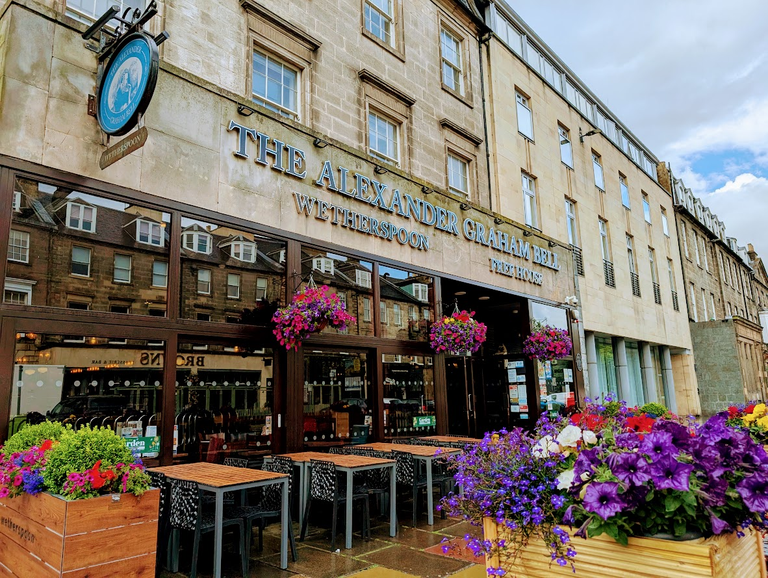
Alexander Graham Bell was born not far from here in South Charlotte Street. An interesting fact about him was that his mother and wife were both deaf.
His research on hearing and speech further led him to experiment with hearing devices, which eventually culminated in his being awarded the first U.S. patent for the telephone, on March 7, 1876.[N 2] Bell considered his invention an intrusion on his real work as a scientist and refused to have a telephone in his study. source
What a vista!
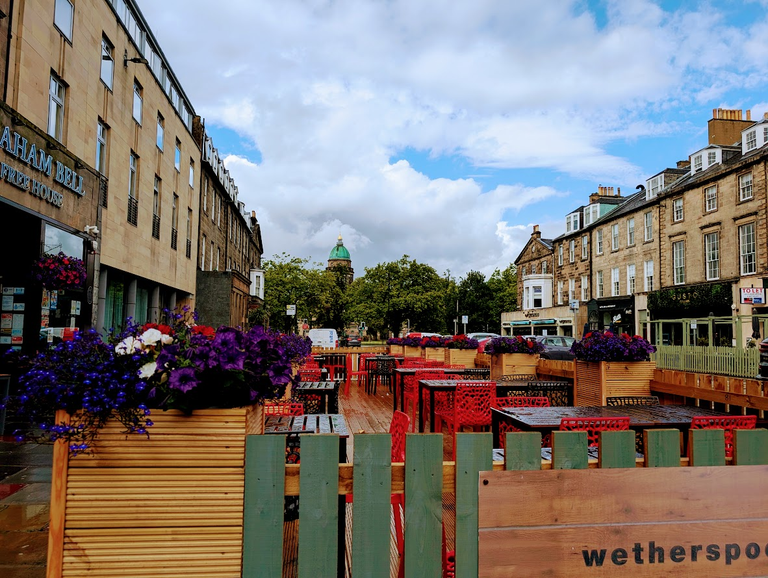
Can you guess what the copper dome belongs to?
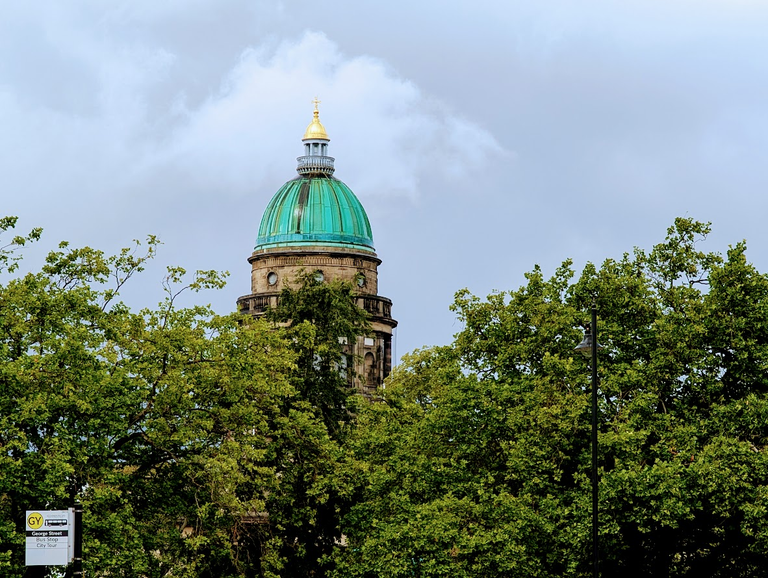
St George's church dome and cross.
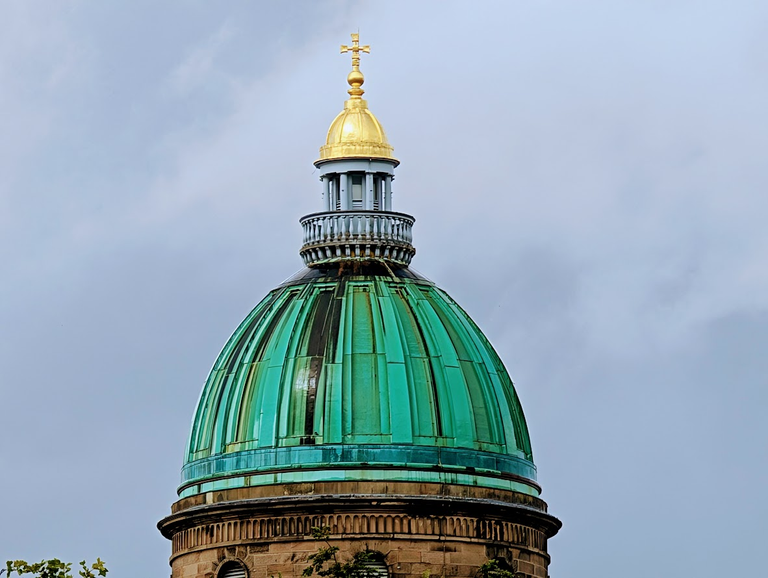
Petunias in the rain, specifically from the 'Surfinia' type
I did say it was raining!

But just look at them, real flowers. That is one thing that Wetherspoon chain of pubs do. Well they do up here anyway, and that is have their pubs in old historic buildings and use real not fake flowers as decorations. It just looks gorgeous and a welcoming environment to have a drink or some food!
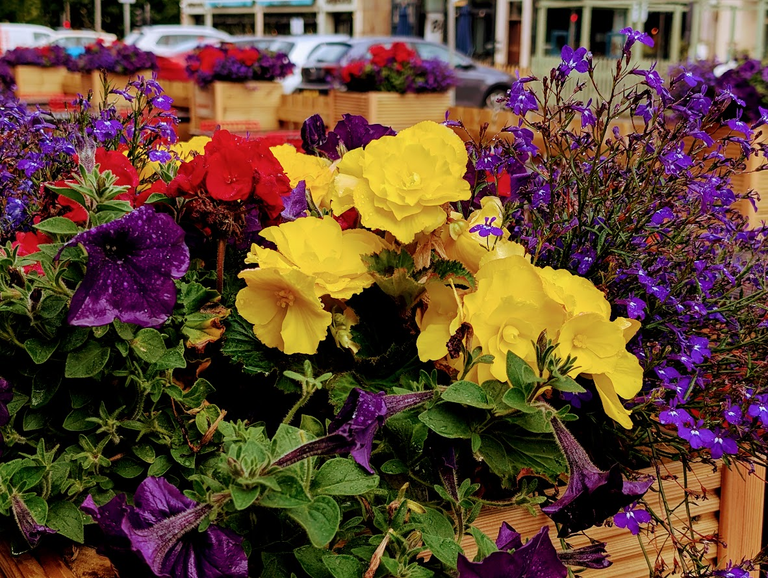

West End vista looking towards Princes St and Lothian Road with Charlotte's Square to the right.
St Cuthbert's Parish Church is in the distance.
The church stands on what is believed to be the oldest continuously used site of worship in Edinburgh, with a chapel reportedly founded by St Cuthbert around the 7th century.
No that is not the original building, that was built in 1894, the spire is older though..
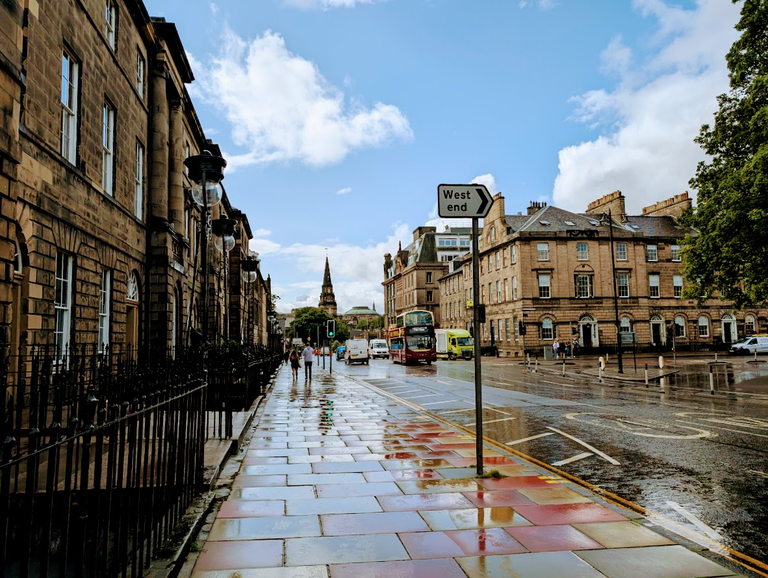
10.30 am on the the distinctive spire that dates back to 1775
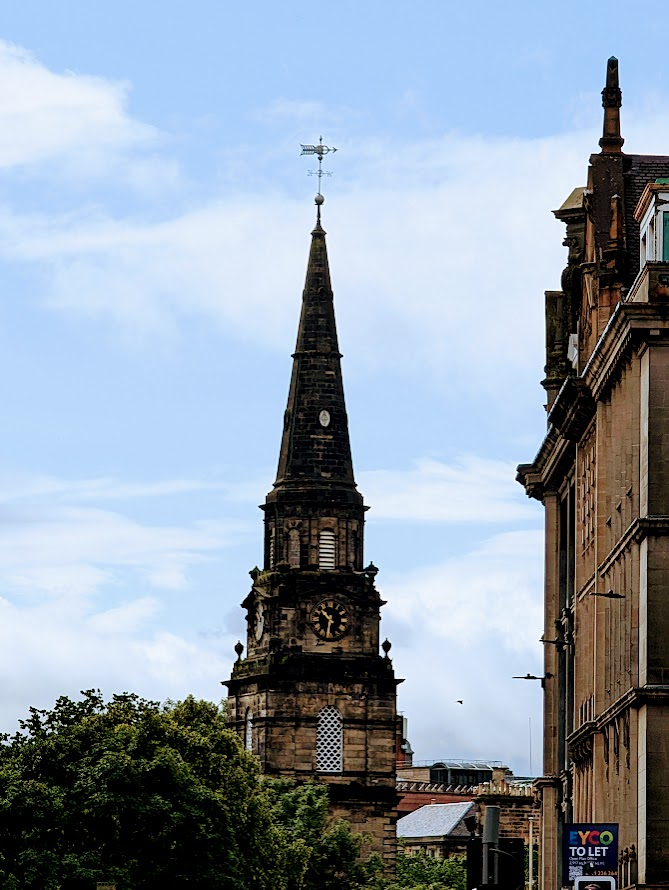
Follow the arrow or weathervane...
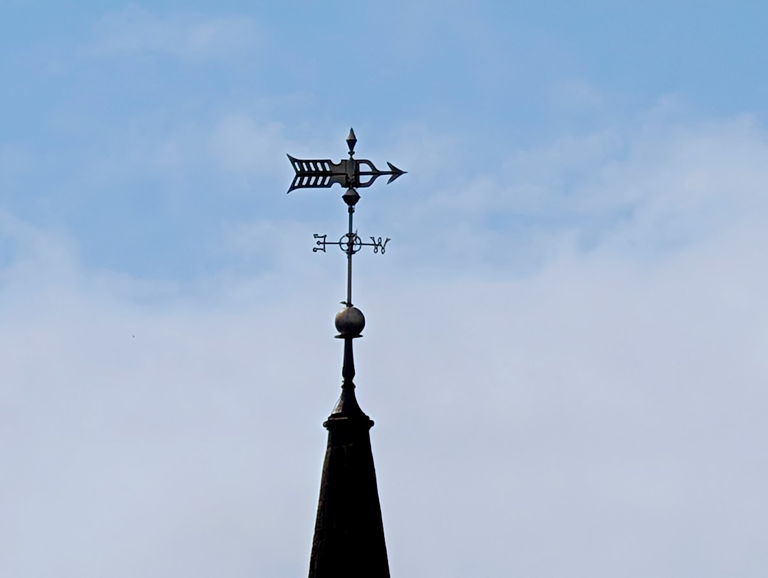

Charlotte's Square and West Register House.
You might be wondering why the House has a fluffing big green copper dome on it as well as a gold cross!
The reason being is that this was originally built as St George's Church in 1811.
It was designed by Robert Adam and later modified by Robert Reid.
In 1964, it was acquired by the government and converted for use by the Scottish Record Office, now known as the National Records of Scotland. It is a Category A listed building and unfortunately not open to the general public, but from the outside we can see an Ionic portico, Corinthian colonnade, and a sizeable green copper dome which is said to be a scaled-down copy of St. Paul's Cathedral in London.
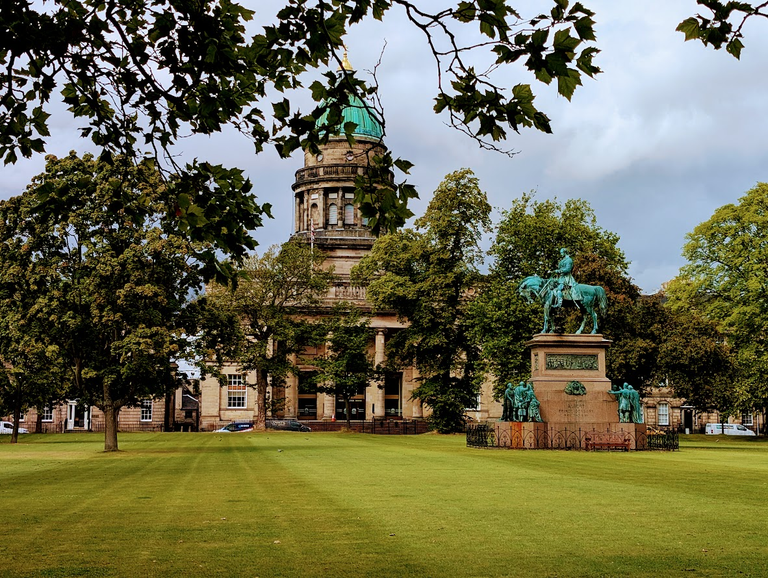
Private gardens and home to the Prince Albert memorial statue
I have not walked on this grass for a long time. The gardens are private and only available to owners of the surrounding properties. For many years in the last three weeks in August each year Charlotte Square gardens was the site of the Edinburgh International Book Festival and that was when I last walked there.
The book festival has since moved across town to the Edinburgh Futures Institute.
The statue is a memorial Prince Albert, the consort of Queen Victoria.
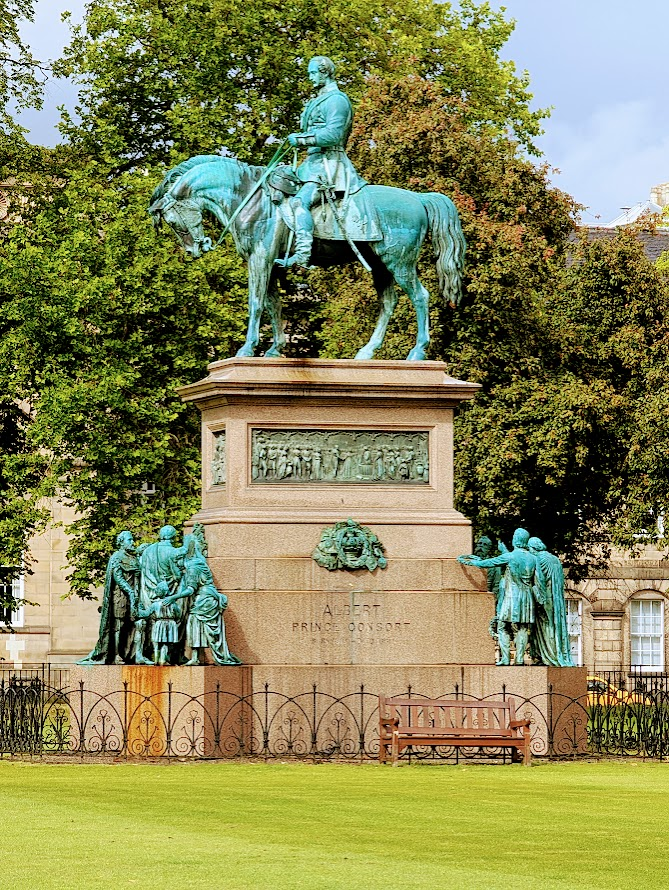
The main statue features an equestrian statue of the prince, in field marshal's uniform, dwarfing the four figures around the base. It was unveiled by Queen Victoria herself in 1876.[3] The stone plinth was designed by the architect David Bryce and the four corner figures are by David Watson Stevenson (Science and Learning/Labour), George Clark Stanton (Army and Navy) and William Brodie (Nobility).
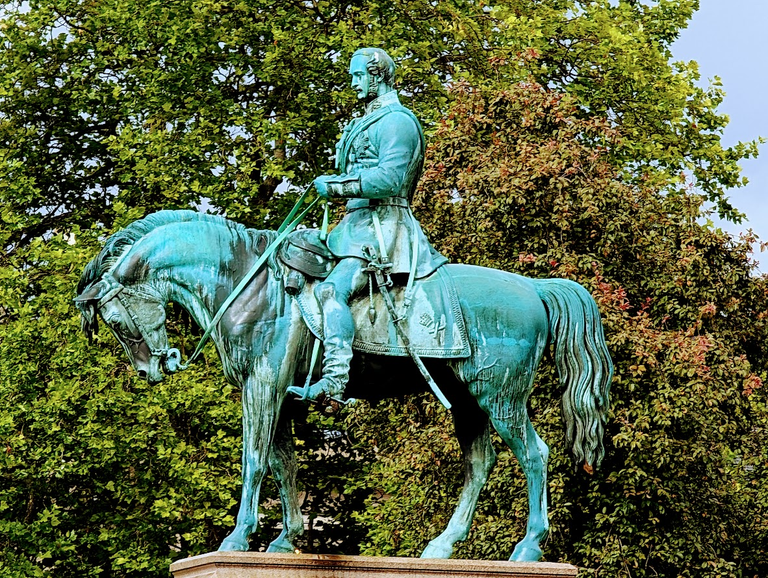
ALBERT PRINCE CONSORT
BORN 1819 DIED 1861
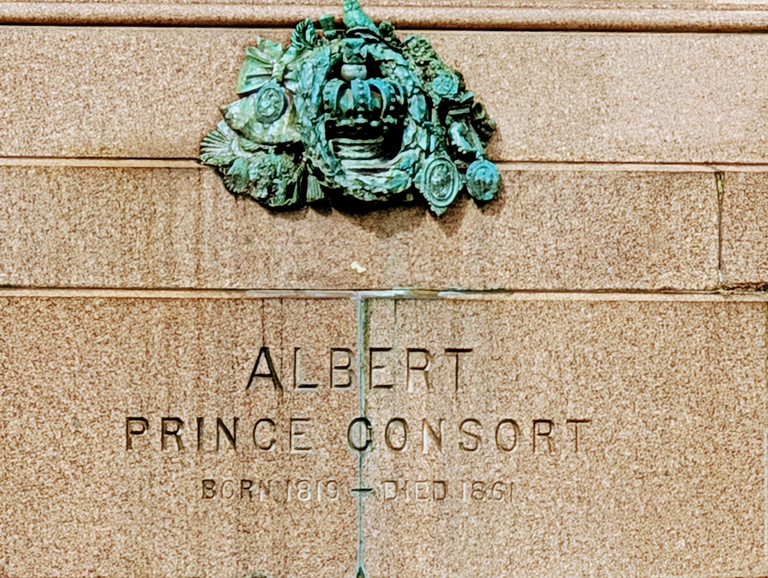

One more stop before I finish for today.
We are walking down from Charlotte Square in the direction of Stockbridge and are on the southeast corner of St. Colme Street, close to where it meets North Charlotte Street.
Catherine Sinclair Monument
A grand, Gothic-inspired memorial Erected in the late 1860s that was designed by David Bryce and sculpted by John Rhind.
It is in the style of an Eleanor Cross and looks like a mini Scott Monument. A fitting comparison as Catherine Sinclair was a major financial contributor to the Scott Monument's construction.
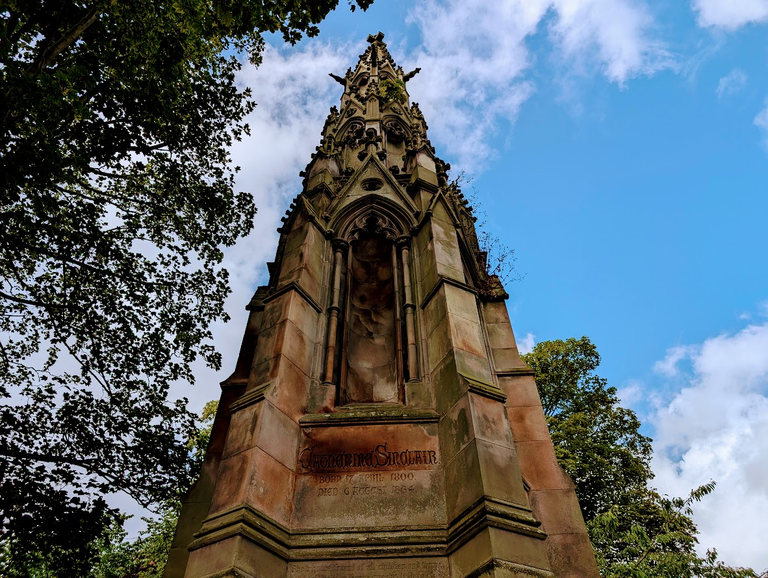
Catherine Sinclair (17 April 1800 – 6 August 1864)
Catherine Sinclair was a Scottish novelist and children's writer, who departed from the moralising approach common in that period. She is credited with discovering that the author of the initially anonymous Waverley Novels was Sir Walter Scott.
She came from a very very well to do family! She was born at 9 Charlotte Square on 17 April 1800, the fourth daughter of Lady Diana Macdonald and Sir John Sinclair, 1st Baronet.
The family lived at 6 Charlotte Square. This is now known as Bute House and where the First Minister of Scotland has residence!
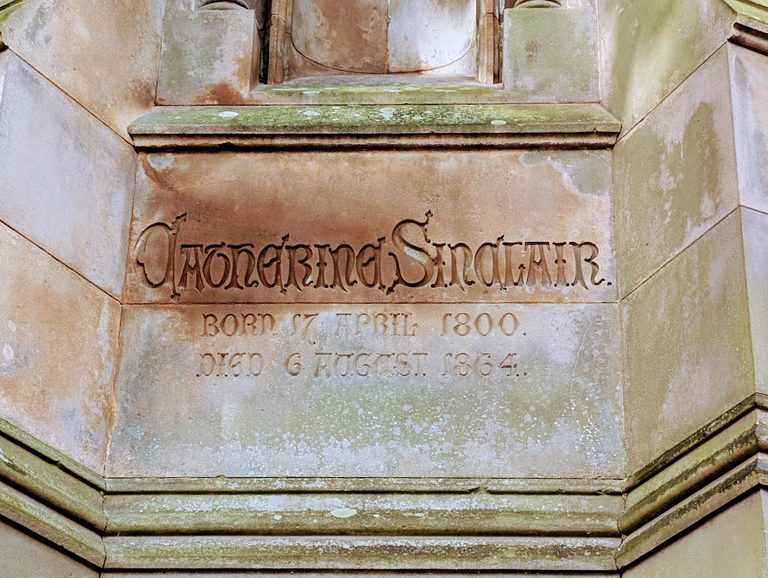
The inscription on the monument pays tribute to her legacy, highlighting her philanthropic work and her most famous book, "Holiday House."
But for me it is her charitable efforts in Edinburgh that should be remembered, which included founding schools, establishing soup kitchens for the poor, and providing the city's first public drinking fountain, a portion of which can still be seen along the Water of Leith walkway today.
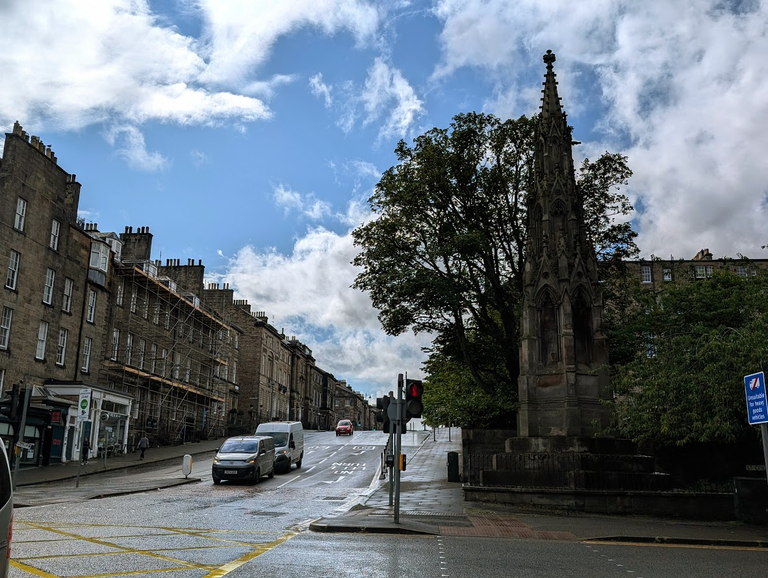
We leave today with view of the Catherine Sinclair Monument looking towards Princes Street.

Thanks for visiting and I hope you managed to get out for a walk this week.

All images and ramblings are from me, the mad Scotsman TengoLoTodo unless otherwise stated. Note images are all snapped by me with my Google Pixel 9 XL Pro smartphone on Friday July 11th 2025 and some were used in canva to make the lead image.
@tengolotodo August 4th 2025
DO WHAT YOU LOVE AND DO IT OFTEN
Haste Ye Back!
Hey fellow creators & readers! 📝🎶🎨
This article was brought to you via Peakd, a cool way to blog on the Hive social platform.
Are you a writer, artist, vlogger, musician, poet, or any kind of content wizard? Hive is a bit different – it’s run by its community, not a big company. That means your voice, your content! It can't just be silenced, censored, or demonetized out of the blue. And that truly matters these days!
If you're ready for a social experience where you genuinely own and control your creations, why not check out Hive?
➡️ Learn more about Hive here
➡️ Ready to join? Create your Hive account here
Come build the future of content with us!


Those are some great pictures, thanks for the walking tour of Edinburgh. The castle is really cool, interesting that it was really just a troop garrison structure rather than a true castle. You have to station your troops somewhere safe!
That vinyl shop is funny, the quote from The Smiths. I never really liked them, they were always too gloomy and depressing. Morrissey is to blame for that I think!
So an old church became a records storage for the government, kind of a sad fate for a church. That gothic spire memorial is really cool, gothic period architecture is always amazing to see.
Thanks for all of the great info, and learning that beer is to be used for medicinal purposed only! lol
!DUO
You just got DUO from @thebighigg.
They have 1/1 DUO calls left.
Learn all about DUO here.
Your reply is upvoted by @topcomment; a manual curation service that rewards meaningful and engaging comments.
More Info - Support us! - Reports - Discord Channel
Yeah my brother is a right moody arse and he loved The Smiths. But yes they are depressing to me and all down to Morissey!
Yeah the castle is cool, just not a castle as such.I need to go round it again, it is run by Historic Scotland and I am member so get in there for free!
Will wait until the festival is over and there are slightly less tourists all over the place to do that though!
I was just about to miss this post! I wouldn't have forgiven myself. It's a walk I really enjoyed. Between domes, statues and inscribed poems, you give us an interesting description of a part of Edinburgh. I like it when cities are full of stories and places that have a lot to tell. I can imagine your joy as you retrace the places you visited when you were young. Thank you for sharing, and un abrazo, Ed
The older we get the more we realise that we missed as a child. Edinburgh is absolutely stacked with history and interesting facts. Whenever I go out walking I learn more and more. A sharing hug Nancy :)
Seems like everything in there is worth the capture. Or is it your talent in photography? 😌😭
Hehe it is not my photography, I just think things like to be captured on film hehe
Must be nice growing up in a city with so much note worthy history ✨😂
It really is, but it is only when you are older do you really start to appreciate that!
That green copper dome on West Register House really stands out and learning that it once crowned a church and now guards national records adds a whole new layer of appreciation.
I love the dome and the gold cross, it is pretty funky being the national records office.
Absolutely! It’s a bold look for a national records office.😀
View more
Richard Bentley and what happened to him?
Wait I'll asked google
In the UK and America Richard is abbreviated to Dick
And here I came looking for some photos of some West End girls! It still looks like a beautiful area despite the rain!
Oh yeah more of that 80s theme lol! Yeah and today is battered with winds from storm Floris!
You can check out this post and your own profile on the map. Be part of the Worldmappin Community and join our Discord Channel to get in touch with other travelers, ask questions or just be updated on our latest features.
Thanks guys and have a great new week :)
Hey @tengolotodo you are welcome.
Thanks for using @worldmappin 😘
Prince Albert statue is so grand. Worthy of being royalty 😁
Hehe well he married one of the most famous royals ever, so I reckon that counts...
Yeah, it does 😁
View more
Great!
Yeah
Congratulations @tengolotodo! You have completed the following achievement on the Hive blockchain And have been rewarded with New badge(s)
Your next target is to reach 260000 upvotes.
You can view your badges on your board and compare yourself to others in the Ranking
If you no longer want to receive notifications, reply to this comment with the word
STOPCheck out our last posts:
A Quarter of a million! Awesome news:)
!PIZZA
$PIZZA slices delivered:
@silentriot(2/10) tipped @tengolotodo
Come get MOONed!
I really liked the horse statue. Your analysis was also very nice.
Prince Albert at his finest!
Take love my friend ❤️
Thanks for sharing this awesome and informative tour of your city 💖 It's so cool how you wove together the history, literature, and music of Edinburgh ✨ Walking through it even on a rainy day was an enjoyable experience 💕
Thanks Elle, I was a Chemical Engineer too and Edinburgh was where I got my degree.